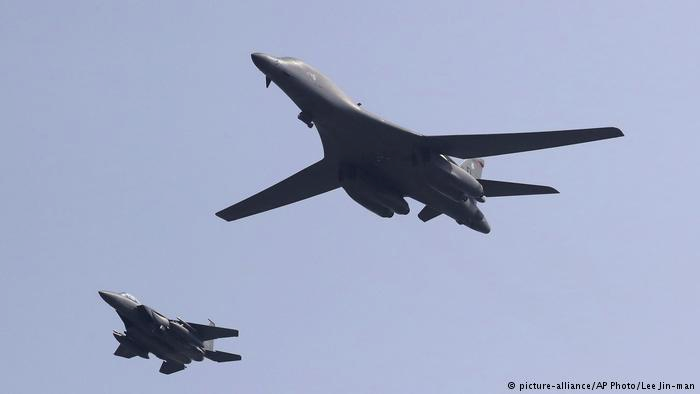
While North Korea tests its inter-continental ballistic missiles (ICBM)s, the U.S. and China demonstrate their capabilities and resolve to use force, both nuclear and conventional. These shows of force seem to be ratcheting up, as the North Korean tests occur more frequently. Flights of bombers and naval exercises are also complemented by words, sometimes quite strong words, such as those by the U.S. Pacific Fleet Commander, Admiral Scott Smith, who while speaking at the Australian National University’s security conference in late July, said,
Every member of the U.S. military has sworn an oath to defend the constitution of the United States against all enemies foreign and domestic and to obey the officers and the president of the United States as commander and chief appointed over us.
[Photo deleted at the request of AFP]
China, meanwhile, has staged two different naval exercises in the Yellow Sea, likely organized to mark the People’s Liberation Army’s (PLA) 90th Anniversary on August 1st, 2017. It is ironic that naval exercises celebrate the Army’s anniversary, and that concurrently the PLA is shrinking relative to the Chinese Navy and Air Force. “The PLA Army will likely take the brunt of the reduction, and the PLA Navy and Air Force are expected to increase in size,” according to Dr. David Finkelstein of the Center for Naval Analysis. Both the Navy, officially the People’s Liberation Army Navy (PLAN) and the Air Force, officially the People’s Liberation Army Air Force (PLAAF) are nominally part of the PLA.
It is also ironic that these naval exercises will close a portion of the maritime commons to commercial traffic, also known as Sea Lines of Communication (SLOC), articulated by Alfred Thayer Mahan, of the U.S. Naval War College.
The PLA Navy’s North Sea Fleet and the Shandong Maritime Safety Administration announced in the past two days that the central part of the Yellow Sea would be cordoned off to all marine traffic from Thursday for military purposes. An area of about 40,000 square kilometres off the coastal city of Qingdao, where the North Sea Fleet is headquartered, was expected to be affected by the drill, which would involve live ammunition, Weihai Evening Post reported on Wednesday. [Korea Times]

The US Marine Corps (USMC) has deployed the F-35B to their forward operating base in Iwakuni Japan, and continues to innovate with their doctrine and Concepts Of Operation (CONOPS), as previously reported in this blog. This stealth strike fighter capability, on the relative doorstep of North Korea, and also relatively difficult to reprisal strikes from North Korea, seems to be one of the strongest deterrent forces.
More to follow on the on-going F-35 debate, as retired Marine Lt. Col. David Berke (also previously quoted in this blog), and Pierre Sprey go head to head on the topic in an Aviation Week podcast.
